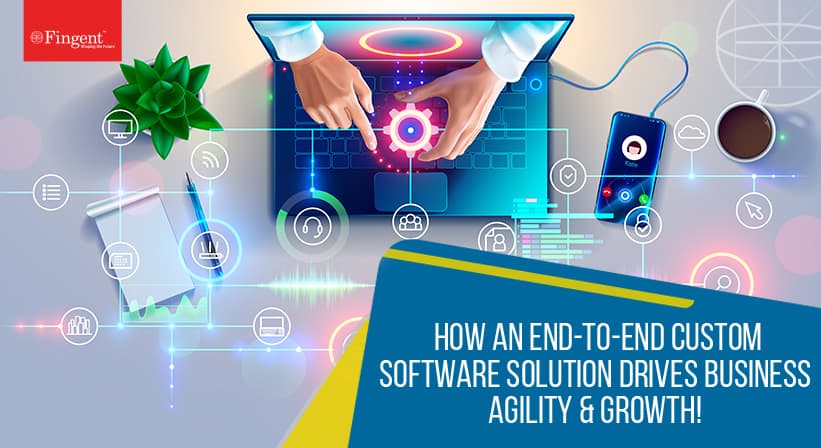Tag: custom software development companies
There is a reason so many businesses today are building an offshore software development team: it is smart, cost-effective, and opens doors to global talent.
But then there is the concern—managing a team halfway across the world is definitely not a walk in the park. It is more like trying to do a group project when half the group is asleep while you are working.
Yet, what happens to the companies that get it right? They do not just survive remote development—they thrive with it.
Here is the big question: Are you managing your offshore team—or merely delegating and hoping for the best?
Let’s find out what you can do to make it a success.
Not Sure How To Scale Faster Or Speed Up Your Development Cycles? Deploy a Quick-to-Implement Offshore Software Development Team!
The Offshore Team – Challenges
Hiring an offshore team feels like an easy task. You get:
- Access to specialized skills
- Lower operational costs
- 24/7 productivity (in theory)
But here is the glitch: many companies think hiring an offshore team is as easy as flipping a switch. Set it up, and voila—magic happens.
Reality check?
Without the right strategy, your offshore software development team becomes a siloed unit, completely disconnected from your vision and your outcomes. That is when deadlines slip, quality dips, and everyone starts playing the blame game.
Let’s Talk About the Real Challenges
Before we hit the fixes, let’s take a hard look at what actually gets in the way of success.
Time Zones: The Invisible Wall
Sure, having developers work while you sleep sounds like a good strategy. Until you hit a blocker at 9 a.m. and have to wait until 6 p.m. for a response. Time differences are manageable—but they demand strategy.
Communication Gaps: More Than Just Accents
We are not just talking about grammar or language here. We are talking about nuance. About how “ASAP” means different things in New York and New Delhi. Or how silence in one culture might mean “yes,” but in another means “no.”
Accountability Drift
If you can’t walk down the hall and check on progress, how do you know what’s really happening? Offshore teams can sometimes feel “out of sight, out of mind”—unless you build visibility into your process.
Misaligned Goals
Your offshore team might be coding like champs, but if they don’t fully get your business, they might build something that’s technically right and strategically wrong.
So now the real question: What’s your game plan to beat these challenges before they beat your project?
Offshore Success Starts with Strategy
Offshore software development is set to triple, soaring to $389.7 billion by 2033 — growing at a swift 12.5% a year. Numbers can’t lie. Offshore software development is working. What about all those challenges that we just discussed though?
Here’s the good news: All these problems are solvable. But only if you stop thinking of your offshore team as “extra hands” and start treating them like strategic partners.
Let’s break down the offshore software development best practices that actually work—beyond the usual cliches.
Onboard Like They’re In-House
Let’s be real—most offshore teams get thrown into projects like substitute teachers on their first day. No context, no clarity, just chaos.
Want better results? Start with better onboarding:
- Share your company’s mission, not just tasks
- Show them your customer’s pain points
- Walk them through product vision and roadmap
If you want ownership, build understanding. Ownership without context is just chaos with a smile.
Define Goals Like You’re Writing a GPS for the Project
Vague goals lead to vague results. Be razor-specific:
- What problem are we solving?
- What does success look like?
- What are the non-negotiables?
Here is a litmus test: Can every developer explain what their work means to the end user? If not, you have homework.
Build a Two-Way Communication Culture
Most companies think communication is about sending. Smart companies know it is about receiving.
Do your offshore team members feel safe enough to say, “This doesn’t make sense”? Do they have channels to raise flags before the ship hits the iceberg?
Remote team management tips are not just about Zoom meetings—they’re about psychological safety.
Set up:
- Daily standups with room for feedback
- Shared task boards for full transparency
- Post-sprint retros to reflect and reset
Communication is a living system—not a checklist.
Align Tools with Trust
Trust doesn’t mean “turn a blind eye.” It means building systems that don’t rely on micromanagement.
Some tools that help:
- Jira/ClickUp for sprint tracking
- Slack/Teams for informal, real-time comms
- Loom for quick screen walkthroughs
Bonus tip? Use shared dashboards. This way, you let both onshore and offshore teams see work progress at a glance. Trust grows when everyone sees the same truth.
Blend the Cultures—Don’t Just Tolerate Them
Here’s where most companies drop the ball. They hire offshore, but forget to integrate offshore.
Invite your offshore team into:
- Product brainstorming sessions
- Customer feedback reviews
- Team bonding activities (yes, even virtual ones)
Humanize the connection. Celebrate wins. Acknowledge their impact.
Managing offshore development team culture means making everyone feel like they matter—because they do.
Discover Offshore Development Team Structure That Best Fits Your Business
FAQs
Here are some questions you may have before (and during) your offshore journey.
Are we hiring offshore talent to save money—or to scale wisely?
One leads to burnout and blame. The other leads to innovation and growth. Which outcome are you designing for?
Is our offshore team focused on long-term business vision or just meeting current deadlines?
The short-term focus can create quick wins. Empower your team to grow with your business, instead of merely pushing them to finish tasks. Build a sustainable partnership that ensures long-term alignment.
How do you manage an offshore development team effectively?
First, set clear goals. Then, establish robust procedures early, and foster a culture of accountability and trust.
What strategies can one implement to avoid project delays and misunderstandings?
Line up consistent daily updates. Once you do that, rely on a centralized communication platform to keep everyone aligned and informed.
How to collaborate with offshore teams?
Treat offshore teams as true partners. This involves maintaining transparency, being mindful of time zone variances, and encouraging open, ongoing dialogue.
Do we treat our offshore team like vendors or like value creators?
Ownership mirrors respect. Trust your team to make the right decisions, be creative, and solution-oriented. When trust grows, ownership follows—and autonomy fuels real innovation. That’s how winning teams are built.
Are you micromanaging every step our team takes?
Micromanaging offshore teams can smother creativity and growth.
Do our KPIs track output or outcomes?
If your only metric is “how fast did they code it,” you’ll miss the bigger picture. Focus on whether the product actually solves the user’s problem.
Are we building a team—or just buying labor?
Teams thrive. Labor churns. Make your choice early.
Are we blending cultures with intention—or just hoping it works?
Cultural integration isn’t something you can ‘just do.’ It’s not a checkbox. Think about it: Are you actively creating a space where different cultures add value, or are you forcing your ways onto them? Find the sweet spot where everyone feels respected—and where the best ideas from all sides can flow freely. That’s when the magic happens.
What can be done to blend the offshore team with effective onshore specialists?
Pair up developers from both sides for code reviews. Rotate leadership in retrospectives. Cross-train wherever possible.
The goal? Blur the borders. Let ideas travel freely. You don’t want two teams—you want one team across two geographies.
How Fingent Helps You Get Offshore Right
This isn’t just theory for us. At Fingent, we’ve built high-performing offshore software development teams for companies around the globe. We do not believe in cookie-cutter outsourcing.
We believe in crafting teams that understand your business, your users, your success metrics. Whether you need to scale quickly, fill skill gaps, or build long-term innovation capacity—we bring the strategy, structure, and support to make it work.
Here’s what we help you do:
- Set up a tailored Offshore Development Center
- Align strategy across time zones
- Build long-term knowledge retention
- Deliver outcomes—not just code
Do you need help building a team that delivers beyond expectations?
Let’s talk.
Final Word: Offshore is not a Shortcut. It’s a Strategy.
Outsourcing is not about cost-cutting. It’s about value amplification. It’s about building a flexible, future-ready team that moves as fast as your market demands—and as smart as your vision requires.
So the next time you think about hiring offshore, don’t ask: “How cheap can I get this done?”
Ask: “How can I use global talent to build something extraordinary?”
The answer might just start with Fingent.
Ready to build your Offshore Development Center? Let’s craft a team that works like it was born in your boardroom.
Stay up to date on what's new

Featured Blogs
Stay up to date on
what's new



Talk To Our Experts
The right software can serve as a growth catalyst for your business. A robust software solution can empower your team to work more efficiently, better serve your clients, and optimize business performance.
But when searching for these software solutions for your business, you’ll have to make many different decisions along the way. One of the very first choices you’ll encounter is whether you want to buy off-the-shelf software or build a custom solution.
Either route can help your organization modernize its processes, improve efficiency, and scale effectively. Which approach will produce optimal results for your organization in the short and long term is still a question.
Because your decision will significantly impact your business for years to come, it’s critical that you get it right.
With that in mind, join us as we crack the code to smart software selection decision-making by exploring the pros and cons of building and buying software.
Read more: Why Should Your Business Invest In An End-to-End Software Solution?
The Build or Buy Conundrum
The buy option is relatively straightforward: You select software that aligns with your organization’s needs, purchase a license, and deploy the technology. When evaluating your options, you will encounter purpose-built solutions for your industry and more generalized options, like basic accounting software.
Conversely, custom-built software for your organization will include specific tools you need — without superfluous features that distract users and get in the way of critical business functions. It’s important to understand that you won’t be building the software unless you have an in-house team of highly experienced software engineers. Instead, you will need to partner with a talented software development firm.
Pros and Cons of Buying Software
Before providing a decision-making roadmap, it’s crucial to outline the pros and cons of each option.
The primary benefit of buying pre-built software is that it is already deployment-ready. As such, you can easily purchase the software and begin implementing it almost immediately. You’ll also be able to demo the product before you buy, giving you an idea of precisely what to expect. This expedited timetable is particularly appealing if your business’ current technology suite cannot keep up with your present needs.
However, some notable drawbacks exist to buying software instead of taking the custom route. First and foremost, off-the-shelf software is less likely to align perfectly with your company’s needs. After all, off-the-shelf software is designed to appeal to as broad an audience as possible, and naturally, it will include some features you don’t need. Evaluating software can be time-consuming, and applications of any complexity may be impossible to assess fully in a reasonable amount of time.
In addition, pre-built software typically has recurring license and maintenance costs that need to be considered and may change over time. There is also the risk that vendors of pre-built software may stop offering that edition or software or go out of business entirely. Pre-built software may depend upon older technologies that are no longer “leading edge,” which can lead to long-term viability concerns.
For some software categories, you may only be able even to consider a few contenders, or what you find may lack some tools or capabilities your business is looking for.
Read more: Choosing between Custom Software Solution and Commercial Off-the-Shelf Product!
Advantages and Drawbacks of Building Custom Software
Custom software is tailored to help your business meet its organizational goals and overcome its most significant growth hurdles. Every feature, tool, and capability of custom software is purpose-built for your business. As such, it can significantly impact your business more than an off-the-shelf alternative.
The two potential downsides to custom software are cost and the deployment timetable. When there is an off-the-shelf alternative, building custom software will typically require a larger upfront investment, but you will have more control over the software. That means you can change your schedule without being tied to the vendor’s schedule or priorities. If the custom software meets important business requirements, you can expect a strong return on investment.
It’s important to remember that developing and deploying a custom-built software solution will take slightly longer. Fortunately, you can streamline the build process by partnering with a highly experienced software development firm.
How to Determine Which Option Fits Best for Your Business
As you prepare to weigh your best opportunities with each approach, you can streamline your decision-making process with a refined approach.
1. List Your Organizational Goals and Needs
When choosing to buy or build, the most critical question you need to ask yourself is: What do you hope to accomplish with your new technology?
Create a list of goals, objectives, and needs. In addition to providing more internal clarity, you can use this list to compare products during your search. If no single off-the-shelf solution meets your needs, it may be more pragmatic to build custom software. However, if you need the solution sooner rather than later.
2. Analyze the Current Ecosystem
Once you have created your list of goals and objectives, you can start analyzing the current ecosystem. Businesses operating in specific sectors — such as the healthcare industry — will have dozens of options when searching for off-the-shelf software solutions. As such, it is much more likely that a healthcare organization will be able to find a readily available solution that meets its needs when compared to a more niche sector.
Even if you are already leaning toward building a custom solution, you should consider what options are available for your industry. Explore all known choices to see how these solutions align with your needs and goals. This tactic can also provide you with ideas to put on a must-have list for your custom software partner.
3. Calculate the Potential ROI of Each Option
While you must regard the upfront costs associated with buying vs. building software, calculating the potential long-term ROI of each option will be more useful for guiding your decision-making process. Start calculating ROI by assessing the likely cost-savings and additional profits that can be expected once the new software is in place. While this impact can often be difficult to predict fully, it may be easier to consider how large the impact would need to be to recover the cost of the investment — the break-even point.
Building a custom solution will cost more on the front end, but this higher initial investment can yield a significant return over the software’s lifecycle. Conversely, going with a cheaper option could solve today’s business challenges, but you may quickly outgrow that software’s capabilities and find yourself looking to upgrade again in the near future.
Read more: When does your Business need Custom Software Solution – Evaluate Now!
Making Your Final Decision
Whether you buy a readily available option or want to leverage the power of custom-built software, you will need an experienced technology partner to oversee your deployment. Fingent is that partner.
Our team of technology experts specializes in building dynamic, custom software solutions for our diverse array of clients. We can also assist with deploying solutions from Microsoft, SAP, and other leading technology development companies.
To learn more about our deployment and development services, contact Fingent today.
Stay up to date on what's new

Featured Blogs
Stay up to date on
what's new



Talk To Our Experts
To build or to buy has been a million-dollar question most businesses seek an answer for. This can become more daunting when you consider the numerous factors influencing the decision. To make it less overwhelming, we will discuss factors and tips to help business leaders make informed decisions. This blog also explains the right process to follow once the decision is made.
Build Or Buy: Should You Buy Software or Build It?
Several factors must be analyzed when deciding to buy or build software internally. Here is an analysis of four key points that can help business leaders to make an informed decision that will impact their business growth:
- What is the scope of the problem that you are attempting to solve?
- How complex does the software solution need to fit your business?
- Can the organization leverage exist experts, or will you need to hire more?
- How quickly does the organization need the software?
It is good to remember that there are no one-size-fits for all in this regard. Analyzing these questions will help businesses zero in on one of the two options. Please read on to find out top tips to help companies identify which of these two is most suitable for their business.
Read more: Choosing the right Software Development Vendor
Top Considerations for Companies to Help Recognize Build vs Buy
Deciding to buy or build custom software is not as easy as flipping a coin. Here are the top considerations that will increase the odds of making the right decision:
- Problem – Businesses must give thought to the problem at hand. Is it attempting to solve a common problem or specific to the company alone?
- Funds – Can the company have dedicated funds to host and maintain the software solution, including upfront costs?
- Time – Consider how time-intensive the problem at hand is. Is it just a nagging annoyance or a serious health threat to the company’s survival?
- Strengths and Weaknesses – Analyzing a business’s strengths and weaknesses will help companies choose whether to build or buy. Can the business withstand the risks that may surface with technical debts, quality concerns, opportunity costs, and more?
- Quality – Consider if you can fully focus business efforts on solving this problem without compromising quality.
- Surface-Level Risks – Before buying or in the future with a trial, demo, or quote, reviewing the surface-level risks of buying versus building software is important.
- Data – For certain companies, their data is vital to their competitive advantage. In such cases, it is crucial to consider how the third party may your proprietary data. Consider if there is the possibility of losing access or oversight to customer data or other critical business insights.
- Security – Ensure the company’s accounts are not compromised by finding out if the third party can be trusted and if they use cybersecurity best practices.
- Vendor Reliability – Consider if the third-party vendor is reliable. Does it have the ability to weather a market downturn or other external factors that may impact the business?
Read more: When Does Your Business Need Custom Software Development Solution – Evaluate Now!
If a company decides to build custom software after all these considerations, it is vital that they follow the right process for the successful development of software.
What is The Right Process If You Decide to Build?
Building custom software might be the perfect solution for your business and building it the right way is key to its success. Usually, it is developed by a third party or in-house developers. Custom solutions ensure features and functionality with the company’s needs in mind. As a result, businesses enjoy increased productivity and growth.
To get started, here is the right process companies can follow:
1. Define your organizational needs
First, determine the current business process, expectations, and verifiable success. Talking to experts, finding out why the changes are necessary, and sketching out the workflows will help ensure a smooth project management process.
2. Resist the temptation to keep everything in-house
It may be tempting to handle all processes in-house to save money. However, working with your own IT team could cause a slowdown in the company operations as they already have their daily work. Here, outsourcing certain tasks makes the most sense. Consider working with a vendor with a verifiable track record in building custom software for other companies.
3. Be practical
To keep the project on track, create a realistic plan together with all involved in the project. This will allow companies to set specific deadlines. Knowing the timeline will help in allocating funds when required.
4. Test and test
Before implementing the new custom software, it must go through two levels of test. One is technical testing by IT professionals and developers to ensure all elements are working. The second is user testing to see if the software works as intended.
5. Document each stage
Documentation must include the team members’ details, roles and responsibilities, deadlines, and expectations for the project. It must also include a test plan, checklist, scope statement, training plan, implementation plans, and detailed user documentation.
Top 5 Trends in Custom Software Development Today to Look Out For
The custom software market is growing exponentially. Some software development trends stand out. These trends are influenced by the need for businesses to leverage advancing technology.
- Cloud technology: The pandemic shut the door on data on-site and opened the door to cloud technology. Developing cloud-native applications will likely continue as many companies still use remote work setups.
- Internet of Behavior: The Internet of Behavior, or IoB, studies customer behavior through the data gathered from various devices. This data allows businesses to understand how to improve the quality of their products and services.
- Blockchain: Blockchain is used in businesses to track records without worrying about discrepancies.
- Low-code and No-code development tools: Workers can create programs and sites even if they lack coding knowledge. According to research, by 2024, 65% of software projects will be done through low-code or no-code development.
- Software integration: Software integration can provide a seamless user experience. Additionally, it helps the company save time and increase productivity.
Read more: Low Code/No Code Development with SAP BTP: How It Is Turning the Future of Enterprise Resilience
Build For the Future
Building custom software allows organizations to use technology that addresses their unique needs. Following the right process can ensure they are implemented in a way that supports and advances business growth.
Custom software development is our forte, and we have been able to help many clients get exactly what they need from their software.
Give us a call, and let’s discuss what we can do for your business.
Stay up to date on what's new

Featured Blogs
Stay up to date on
what's new



Talk To Our Experts
Custom software tackles the specific needs of users more comprehensively than traditional off-the-shelf packages. Efficiency, scalability, lower integration cost, uniquely tailored features, functions, profitability, and independence are a few of its major benefits. In simple words, custom software creates a more customer-centric approach to your business, which translates to more business.
Globalization has pressured companies to take bold steps in expanding their horizon and potential. The rapid increase in market trends, technological innovations, and increasing competitor growth has changed and raised customer expectations. Deploying custom software development solutions in your business can be a strong weapon in this vicious battle. This blog will show you why and also help you see if this might be the right time to implement it for your business.
Why Is There a Need For A Custom Software Solution?
Evolving times have made it necessary for businesses worldwide to step up to the challenge of being bold, unique, and versatile. “Be different or be forgotten” has never before been more relevant than today. Custom software gives you the tools you need to satisfy your customers.
Here are some more reasons why custom software development is the current need for businesses on a global scale:
1. High Security
Security nowadays is a prime preference provided by most companies. Getting hacked by cyberpunks is a nasty affair that not only compromises your company’s data and security but also ruins the reputation of your business. Compared to commercial off-the-shelf (COTS) Software, customized business software is better in terms of security and competence in saving data.
Mobile app formulating corporations exemplify this feature by merging features like two-way authentication and data encryption.
2. Efficiency
Custom Software is purpose-built to support unique operations and workflows promptly and productively. It refines the workflow by removing unnecessary factors and automating monotonous and tedious manual jobs. This way, it fulfills the fundamental goal of improving your company’s and its employees’ operational efficiency and productivity.
3. Scalability
Since customized software is created based on the unique needs of a business, it can easily be modified and embellished depending on the growing needs and requirements of the company. Scalability is one of the greatest significant advantages of custom software. It allows you to construct relatable software based on your business requirements. It can also cut costs associated with purchasing extra licenses and subscriptions to commercial software.
4. Cost-Effective
COTS software generally fails to work with existing and legacy applications. Businesses must invest further to ensure the software works well with their existing infrastructure. On the contrary, custom software can be built to adapt easily to an organization’s needs and integrate with any environment. Custom cloud software development goes one step further and enables you to build cloud-native applications at a much lesser cost.
Read more: Know What’s Driving Custom Software Development Cost This 2022!
5. Independence
Deploying custom software means freedom from the clutches of a commercial software vendor. You can avoid incessant price hikes for licensing and support. You will also remain unaffected when packaged software goes out of business, or a vendor terminates a product. With custom-developed software, you are in charge of creating and maintaining the software, which means you can update and modify it as regularly as you need.
These are just a few reasons for the increasing need for custom software solutions. It can effectively meet the demands of businesses irrespective of the company’s size. Technically progressive solutions can give you a stepping stone over opponents.
Using custom applications reports a 77% reduction in manual data entry! Learn more about why choosing custom software works over commercial off-the-shelf solutions. Scroll through our Infographic now!
Does Your Business Need Custom Software Solution Right Now?
Now that you know the benefits of custom software, the question is: do you need to implement it right now, or can you put it off for a while? Here is a checklist of symptoms. If you tick any of these boxes, it might just be time to get that ball rolling on a custom software solution:
1. Lack Of Efficiency
Are your employees struggling with mundane manual work? Is it resulting in delays, lower productivity, and errors?
Custom business software developed according to your requirements will empower your business to tackle these challenges by providing an all-in-one environment for employees to plan and execute the workflow, communicate effortlessly, and procure data anytime. By enabling automation and AI in the software, you will be able to eliminate the element of human error and conserve your human resources for more focused tasks.
2. Data Management Issues
Do you often struggle to access and track crucial data? Does it take ages to make sense of the data and put it to good use? Are you struggling with the threat of data leaks?
Data is probably the essential asset of any business. It is usually challenging to store, analyze and track crucial information, and keep the data secure from theft to maintain the data integrity in your industry.
A custom software solution can be built to include Business Intelligence (BI) solutions that can help you convert data into actionable insights. This will help you make intelligent data-driven decisions for your business. You can also customize security layers for your software to address the particular security risks associated with your business.
3. Low Customer Satisfaction
Have you been receiving more customer complaints lately? Are they dissatisfied with their interaction with your business?
Nobody knows your customers as you do. Integrating this knowledge into your software can be priceless in ensuring customer satisfaction. Custom software allows you to do just that. You can work with your developers to integrate insights from your customer base and market analysis and provide features that your customers will be happy with, which can lead to a seamless customer experience.
4. Business Expansion
Is your business expanding? Do you need to grow technologically?
Expansion and development are two constants in a business owner’s mind. Whether your business is expanding in terms of location, the number of employees, or customers, you unquestionably need to grow technologically.
You don’t want to add technological issues to the chaos of a quickly expanding business. Looking for new software solutions every time a component of your business grows will be a real challenge. With custom software, you can easily build on the existing software and add features as you scale.
Read more: Choosing the Right Software Development Vendor
How To Get Started?
As you can see, custom software can play an integral part in the operation and success of your business by improving productivity and increasing efficiency. It is an excellent investment in time-saving, cost-effectiveness, and risk reduction.
The first step is hiring a professional technical team to help you develop custom software. Fingent, a leading custom software development company, excels in crafting tailored software solutions for clients, perfectly aligned with their unique requirements. We can help you too.
Give us a call, and let’s discuss your requirements.
Stay up to date on what's new

Featured Blogs
Stay up to date on
what's new



Talk To Our Experts
Stay up to date on what's new

Featured Blogs
Stay up to date on
what's new



Talk To Our Experts
There is no information that is not available on the internet today. Digitally, the world has grown into one big continent. Digital presence has become vital for every business, small or large. The times that you only depend on an offline marketing campaign or connection is gone. Today, more than 80 % of users go online and search for things. Even if they zero in on a product, they still will research the product or the brand online. In such a situation, a business that doesn’t have a strong presence online will suffer. Business growth can be directly related to promotions, public relations, advertising, and sales. Let us see how getting a digital presence will boost your business –
1. Provide information
A business with a decent website offering all necessary information that users seek is a good start. Even if you run an offline business, customers will seek online information to know about you even before walking into your office.
2. Get more customers
The digital world is a great place to find potential customers who might be interested in what you are selling. Social Media is a good place to begin campaigns that are not necessarily direct marketing. Spread the word with hashtags and keywords. Your current customers will share your posts and turn into indirect marketers as well. These platforms provide a boost to your visibility and provide the right traffic your business requires.
3. Be visible
When your business has been tuned with Search Engine Optimization (SEO) elements, you will start getting more and more traction. The right type of optimization will ensure that you end up as a top search whenever a customer is looking for a relevant product or service that you are offering. Also, it helps you get an edge over other competitions, both offline and online since your name will come to the front and grab more eyeballs.
4. Market your business
Advertising your business is the sole way to boost your sales and nothing works as good as digital marketing in this day and age. Apart from having a presence on social media websites, targeted marketing campaigns on these sites will spread awareness about your products and services team with great offers to attract customers.
5. Improve Services
Digital presence of your business provides you with an opportunity to directly interact with your customers. Listen to their grievances, feedbacks, and even offer a solution for their problems. This feedback pattern can help you decide on improving your products or services. Companies can consider some of these points as a part of their marketing strategies to bounce back or to adopt what way to go forward. Such a medium works perfectly well for your business as well as your customers. To increase visibility and drive new business, companies create custom business solutions to advertise online.
6. Global Presence
If your business is local and has an aspiration to go global, the digital world is the right place to put your foot forward. It helps in not just connecting with people worldwide but also getting yourself known to everyone. You can add posts on social media websites regarding your services and add a survey to know if they would like these products or services in their locality. It’s a great way to know the potential of a market even before you actually start the ground activity. Businesses that are looking for investments can also leverage on this very presence as one of their key strengths.
A great way to add a digital presence to your business is seeking the help of an experienced digital partner who can provide you with all the necessary tools to get you started and then skyrocket your business ahead.
Stay up to date on what's new

Featured Blogs
Stay up to date on
what's new





































































